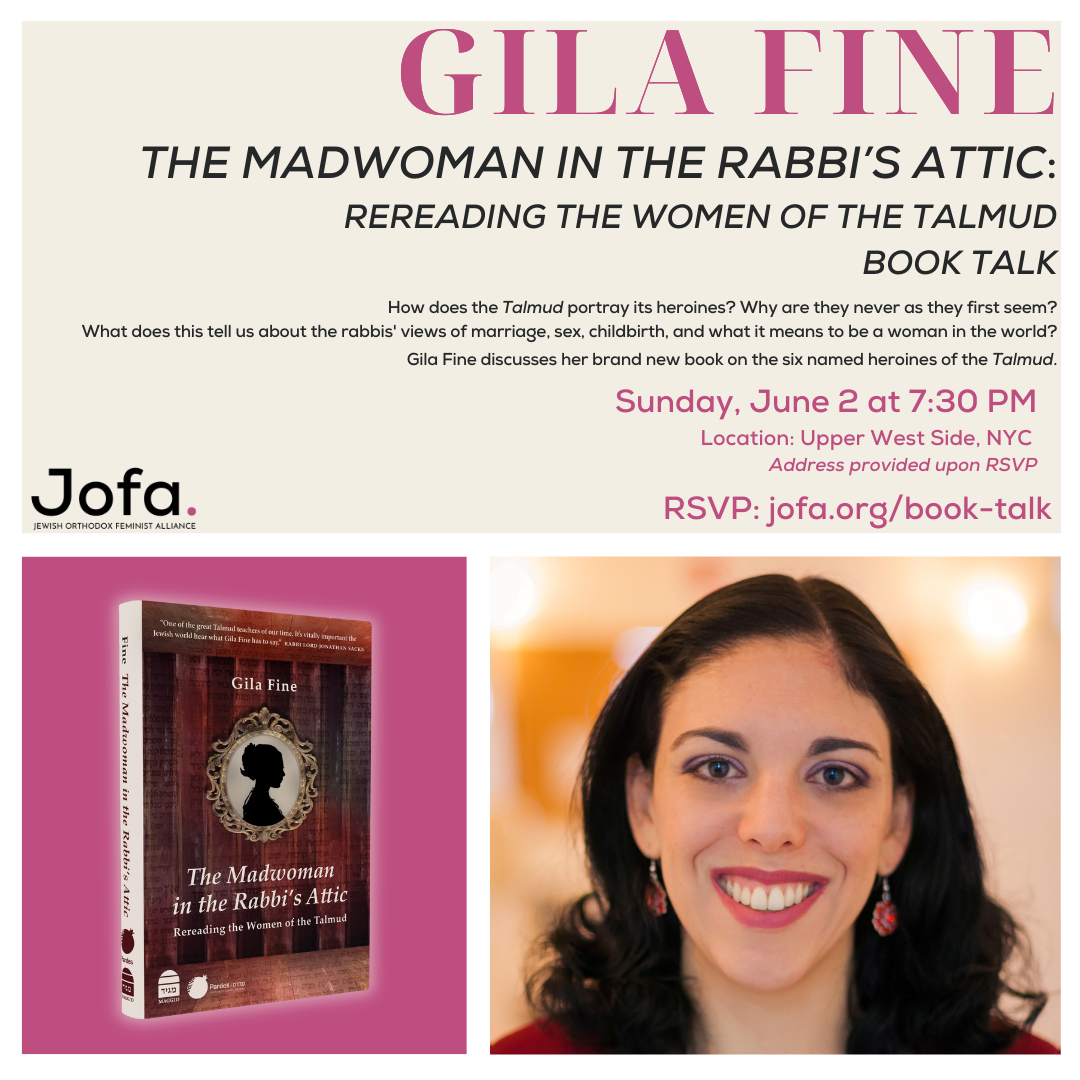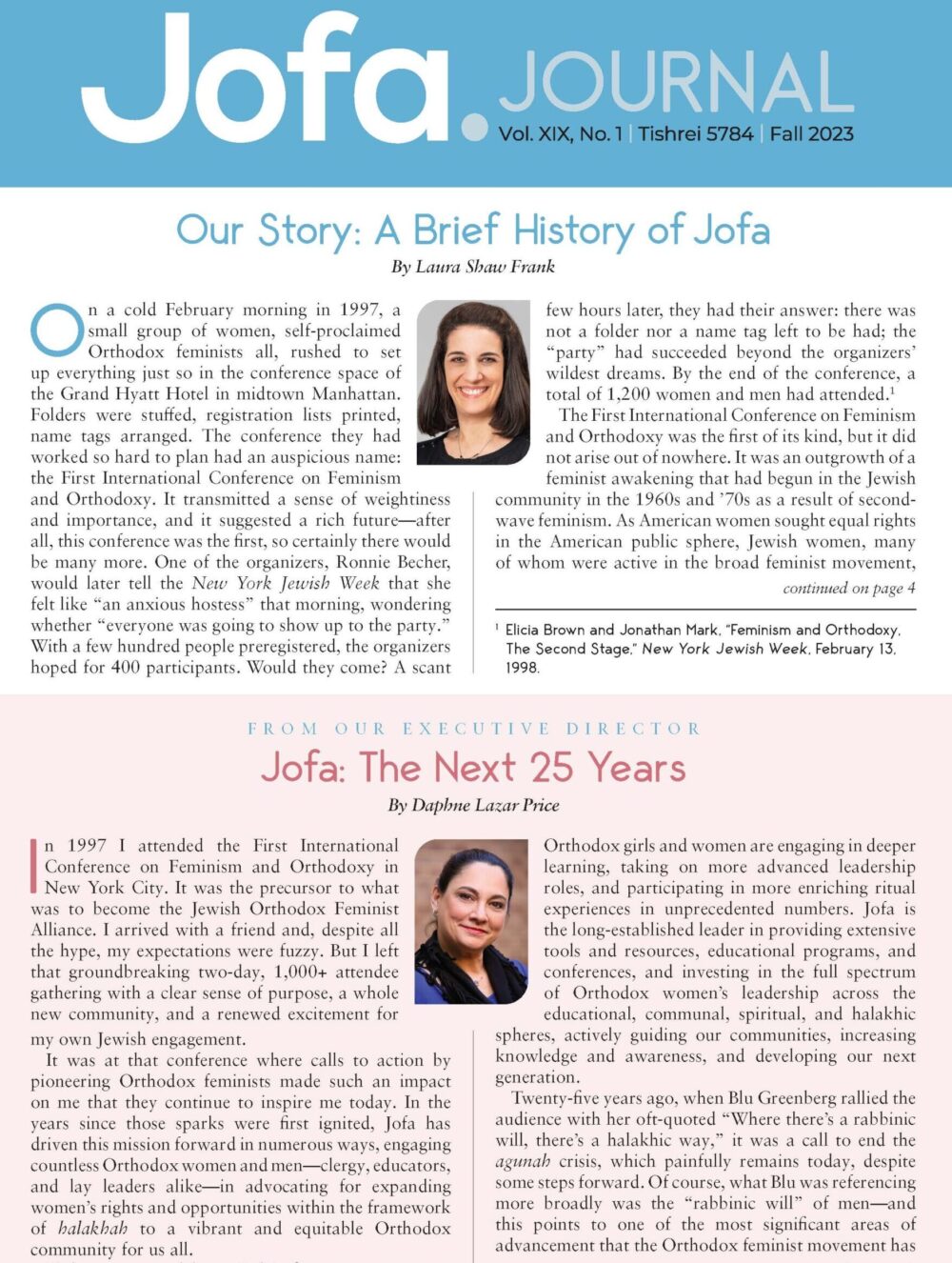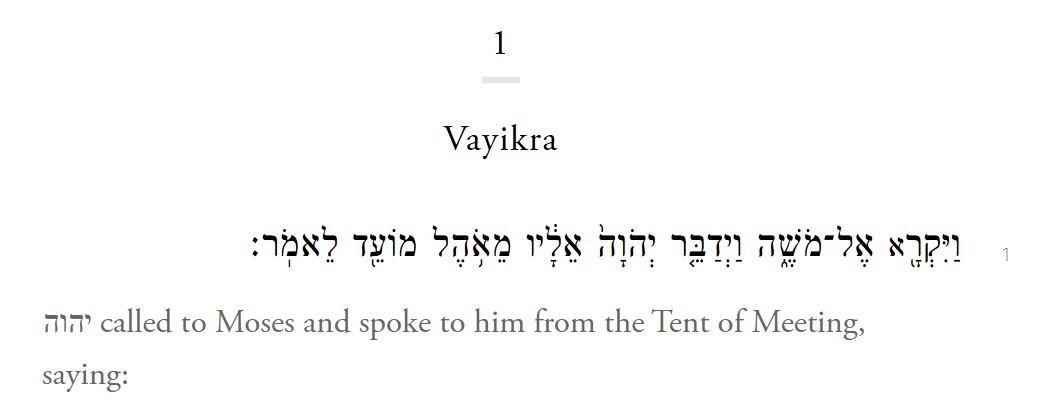By David Bigman
Over the past hundred years, as medical knowledge has advanced, it became clear that infertility was a problem among a small percentage of the halakhically observant population. Jewish families were being denied offspring solely because of their observance of the Torah commandments of taharat hamishpaḥah (family purity laws). This problem has been discussed sporadically in the responsa literature. The following is a description of my approach and how I came to co-author a halakhic monograph on this issue.
Close to forty years ago I was sent by my community, Kibbutz Ma’ale Gilboa, to study halakhah because there was a great need for a local posek, especially in the realm of family purity. Because of the pressing needs of my community, I agreed to prepare myself to function as a community posek. I commuted daily to the Ariel Institute in Haifa, headed by Rabbi Sha’ar Yashuv Cohen. Almost all the members of the kollel were from various ḥareidi communities—hasidic, Litvish, and Sephardic. As we studied hilkhot niddah, the problem of halakhic infertility came up. This was described as ovulation that occurs regularly before the night on which the woman is supposed to go to the mikvah (ritual bath); thus, the renewal of sexual intimacy occurs too late for conception. Almost all the members of the kollel felt the need for a halakhic solution very keenly. Their intuition was that this problem must be faced because the almost universal desire for family and the fulfillment of the commandment of p’ru u’rvu (“be fruitful and multiply”) were at stake. The only consolation we had was the common belief that the phenomenon was rare.
A year or two after I completed my studies in the kollel, a family in my community approached me with this problem. Their gynecologist had said that the reason there was no pregnancy was because ovulation preceded the night of t’vilah (immersion) by a day or two. (At that time, the means used to determine the time of ovulation were very approximate.) I immediately called my mentor, Rabbi Akiva HaCarmi, and he suggested the following leniency. He said to instruct the couple that the woman may go to the mikveh at daybreak on the seventh day of her shiva nikiyim (seven clean days) in order to renew sexual intimacy approximately twelve hours earlier. Rabbi HaCarmi told me that, from his experience as a community rabbi, this leniency would solve the problem within a few months, but only if the discrepancy between the time of ovulation and the night of t’vilah was not more than a day or two. This novel leniency was my main vista to solve the problem for quite a few years. The basic halakhic discourse to allow this solution was outlined to me by Rabbi HaCarmi, and is discussed in our book, Akeirut Hilkhatit (Halakhic Infertility).
Two Views on Hormonal Solutions
Over the years, other solutions based on medical intervention have come into vogue. The most prevalent method is hormonal treatment, usually to delay ovulation. In extreme cases, artificial insemination has been suggested. The medical establishment on the whole, including secular Israelis, has accepted these solutions as legitimate. Two prominent observant gynecologists, both friends of mine, differ on this issue. One has said that hormonal treatment is extremely detrimental to the long-term physical well-being of the woman. The other says that these particular short-term hormonal treatments are innocuous, and there is no scientific basis for the need to avoid them.
The view that hormonal treatments are detrimental has led to a radical suggestion—to revamp the whole halakhic practice of shiva nikiyim (counting seven clean days after the menstrual flow has stopped). In time, some women and some doctors have expressed dismay that medical intervention, whether mild or extreme, was being used for a problem that was not medical in its nature, even when the medical intervention was not detrimental to a woman’s heath, yet very uncomfortable for the couple. Out of this genuine concern, the thought arose to apply one specific radical way to help the couples in question—the complete eradication of the practice of shiva nikiyim for all couples; the possibility of other solutions was not presented.
Although this approach was the result of genuine concern for the woman and the family, it bespoke an originalist approach to the halakhah, denying the latitude and flexibility of the Oral Law and its relationship to myriad human experiences. This solution was halakhic brinkmanship and led to serious problems. The substratum of many leniencies in the laws of taharat hamishpaḥah is the safety net of the shiva nikiyim, without which, quite likely, any aberrant bleeding would render the resumption of sexual relations forbidden because of its close proximity to issur karet (that which is strenuously forbidden). When a couple chooses the paths of pure Torah law, complications are quite common. On the practical level, this radical approach of getting rid of the shiva nikiyim is accepted only in a minuscule segment of Torah-observant society.
Although I do not feel that it is appropriate for a posek to take a stand on a medical issue, clearly there was a piece missing in the discussion. Was the source of the couple’s distress really because of halakhic infertility, or was it a simple misunderstanding or a rigid, artificially stringent reading of the halakhic material? One inherent problem is that most doctors have very little knowledge of halakhah and accept the patient’s assessment at face value. The woman who makes the assessment may be completely off track. Her assessment is possibly based on poor instruction in the laws of taharat hamishpaḥah before her marriage or complete ignorance of the nature of the halakhic system. Young people in Israel are often taught that there is only one correct way of observing halakhah, one correct answer to a halakhic question. Thus, if a woman approaches her local rabbi with a question of family purity, she often does not think it relevant to mention her particular situation of halakhic infertility or, for that matter, any other extenuating circumstance. The rabbi does not think it appropriate to ask whether there are special contingencies. Although he must be aware of halakhic variants, he too may have grown up with a very rigid view of halakhah. Even when the particular circumstances do come up in his discussion with the person who asked the question, often he simply does not have the expertise or the latitude to solve the problem. He may have been chosen as the community rabbi because of many other skills important for his community.
Solving Halakhic Infertility without Medical Intervention
The result of this insufficient process is that many women go through unnecessary medical procedures. These procedures may be innocuous for some but horrendous for others. Some are extremely unpleasant for all. As medical solutions have become prevalent, they actually exacerbate the problem, as they present the posek with a simple solution. He often feels he can shirk his duty and does not bother to dive into the halakhic literature and to take responsibility for difficult decisions. My rather limited experience has shown that almost all cases of so-called halakhic infertility could be solved without medical intervention and without forgoing the shiva nikiyim, if one is extremely attentive to a woman’s particular situation and is aware of the latitude in the halakhic system.
About ten years ago, my students asked me to make my views public. I allowed them to summarize what I had already written down, with one stipulation: My cell phone number must appear in the article. Thus I was able to move away from polemics and into a position of actually helping. Since the publication of my views, I was called several times a week. The people who called have often had some halakhic advice or medical intervention that wasn’t successful. Sometimes a posek or poseket would call. Along with several other poskim, I gained a reputation as being a troubleshooter on this issue, and poskim started referring couples to me.
I have had the privilege of helping many couples, but have also learned a lot from listening attentively to the women asking my advice. The women come from a wide spectrum of the observant community in Israel and abroad. A solution has almost always been found without medical intervention, often in consultation with gynecologists and my mentors and friends, including my friend Rabbi Elyashiv Knoll (zt”l). I have, however, come across a few cases of true halakhic infertility in which more extreme solutions were necessary.
My colleague, Rabbi Binyamin Holtzman, helped me write up these case studies into a book, and we are grateful to Rabbanit Dr. Hannah Adler Lazerovitz for writing an introduction. The book itself is simply an anthology of responsa on this issue. We delineate several avenues to deal with the problem. We hope that the methodology is clear and convincing. We hope this book, by disseminating knowledge and methodologies to poskim, poskot, and learned laypeople, will help many couples have children.
One of the dominant characteristics of responsa literature is the open and frank communication between the person asking for halakhic guidance and the person who provides it. While codes of law have much value for study and reference, the responsa mode is the right mindset for the quest for halakhic truth. Hopefully, with heightened awareness of the workings of halakhah will come the most appropriate choices, especially for sensitive matters of taharat hamishpahah (family purity).
Rabbi David Bigman has been the rosh yeshiva of Yeshivat Ma’ale Gilboa since 1995. He was one of the founders of Yeshivat HaKibbutz HaDati laBanot, which later became Midreshet haBanot b’Ein Hanatziv. His book on halakhic infertility, Akeirut Hilkhatit, co-authored with Rabbi Binyamin Holtzman, was published (in Hebrew) by Yeshivat Ma’ale Gilboa and HaKibbutz HaDati.
[Sidebar]A Note about My Halakhic Approach
I think it appropriate to explain my approach to halakhah. In many circles, the posek is viewed as a scientist looking for truth based on empirical facts. I would suggest that the analogy to science is misplaced, and the work of the posek should be likened more to that of an architect, whose plan must take into account the laws of physics, but will not exclusively be determined by them. Based on the laws of physics, the architect will create a functioning edifice that is both practically and aesthetically compatible with its surroundings. Natural phenomena such as geography, climate, and topography limit the architect’s creative license, as do manmade constructions such as buildings, roads, and sewage systems. In spite of these constraints, different architects will provide different solutions to the challenge and very often several competitive solutions are successful. So, too, the posek takes into account the human condition and the particulars of the situation at hand, as well as the binding nature of Jewish law in all its variants and complexities. The foundation of the halakhic process is the total commitment of both the recipient of the decision and the decisor to the Written and Oral Law, but the pinnacle of its achievement is the well-being of the individual, the specific community, and the community at large. These principles are discussed with various nuances by many renowned scholars from the period of the Gaonim to the present day. In retrospect, although not articulated, these basic principles were present in almost all of my contacts with poskim, when the cultural and social contexts were taken into account.
[callouts, if necessary]
My rather limited experience has shown that almost all cases of so-called halakhic infertility could be solved without medical intervention and without forgoing the shiva nikiyim, if one is extremely attentive to a woman’s particular situation and is aware of the latitude in the halakhic system.
I have had the privilege of helping many couples, but have also learned a lot from listening attentively to the women asking my advice.
A solution has almost always been found without medical intervention, often in consultation with gynecologists and my mentors and friends.









